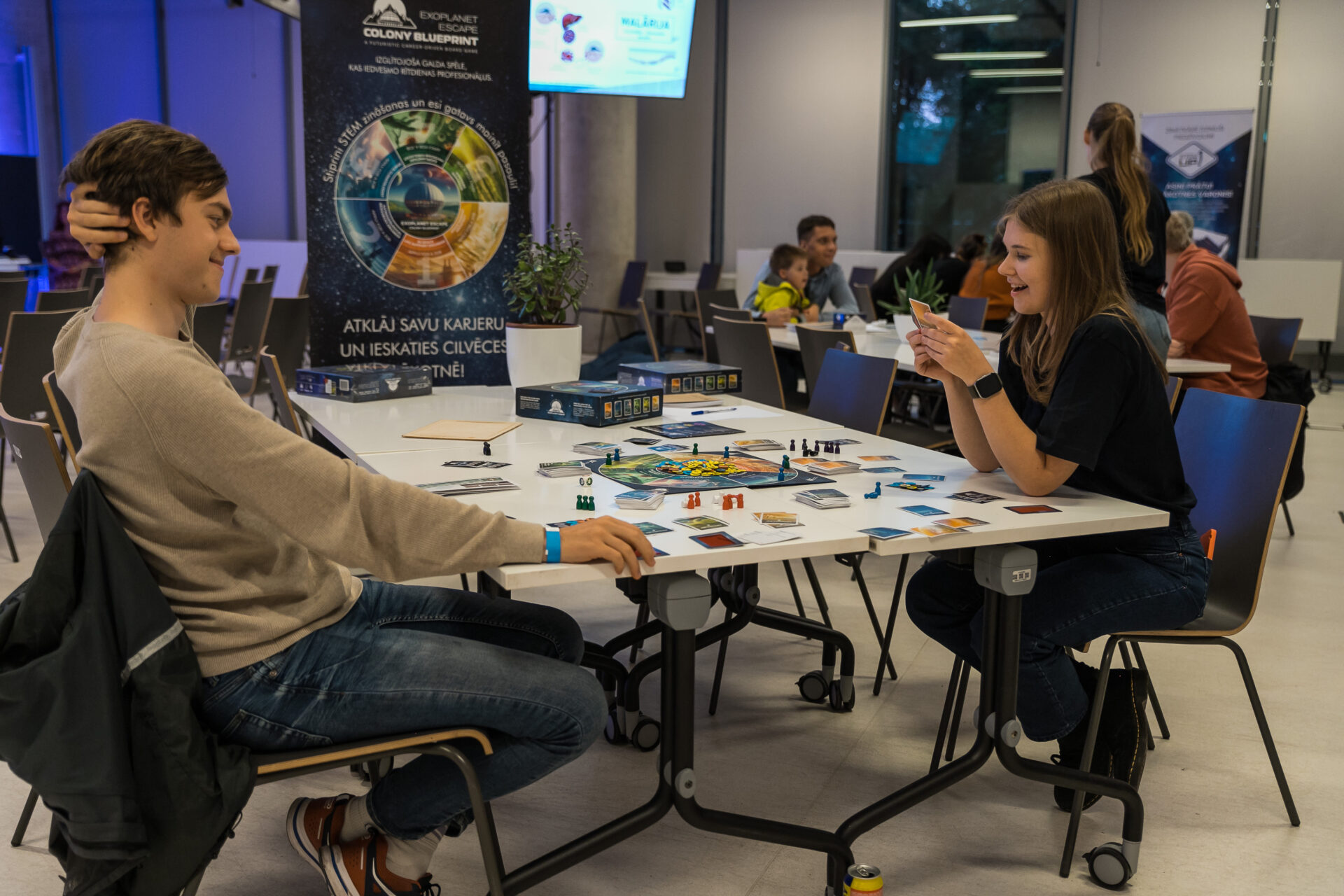During the Night of Scientists 2025, the BioPhoT stages at the University of Latvia (UL) and the Institute of Solid State Physics (ISSP) of the UL stood out, where visitors had the opportunity to get to know the diverse and socially important innovation projects implemented by Latvian scientists within the BioPhoT platform. Researchers revealed how science can become a driving force for the creation of new technologies with real applications in medicine, industry, environmental protection and societal well-being.
Seven projects with high commercialisation potential were presented at the Academic Centre of the University of Latvia. The researchers addressed the audience with a creative, illustrative and understandable approach to presenting complex technological solutions.
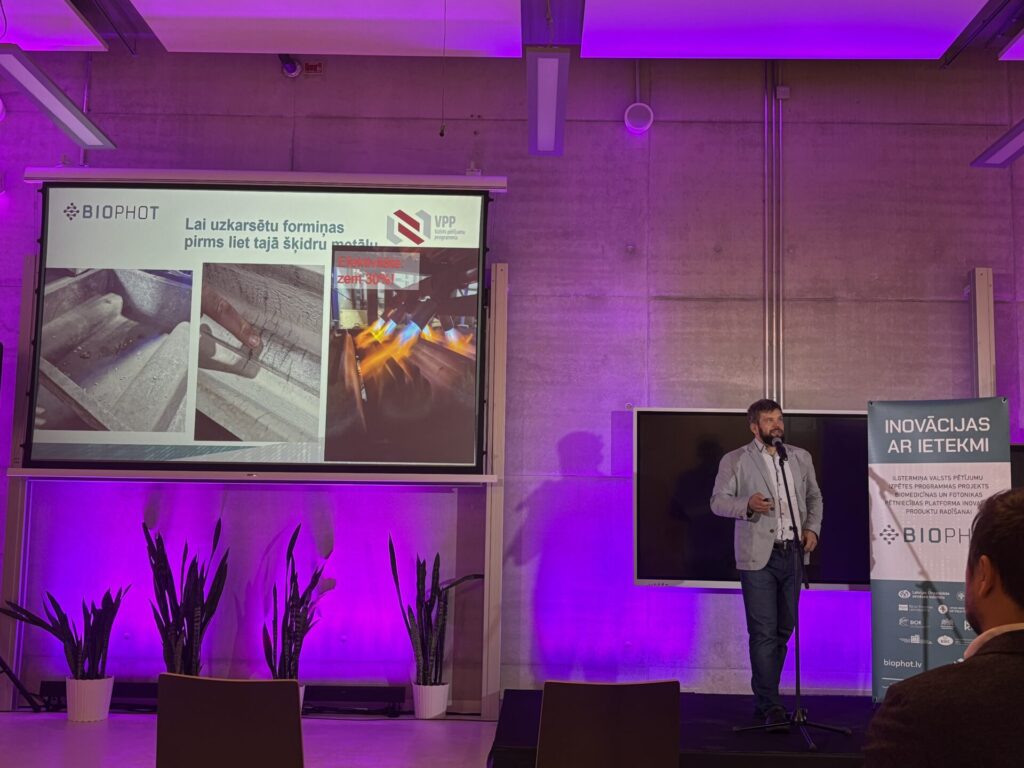
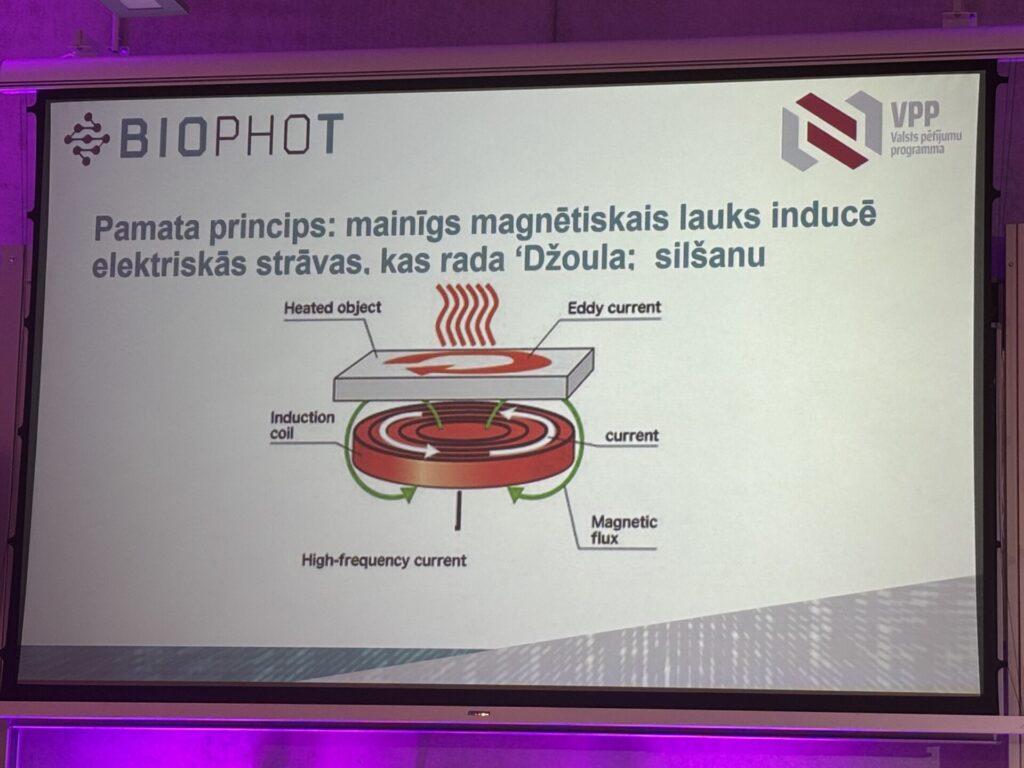
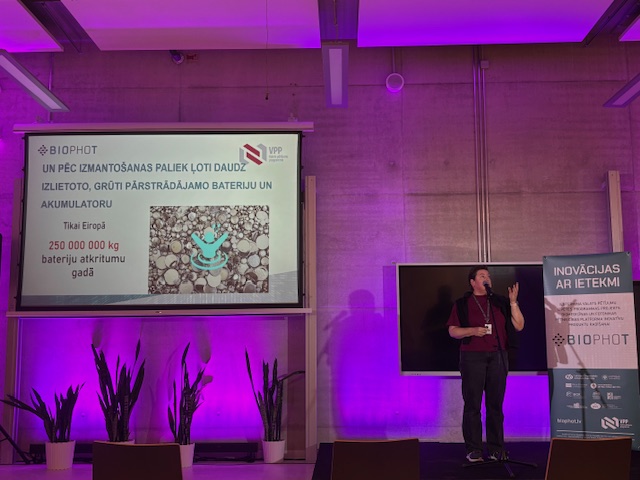
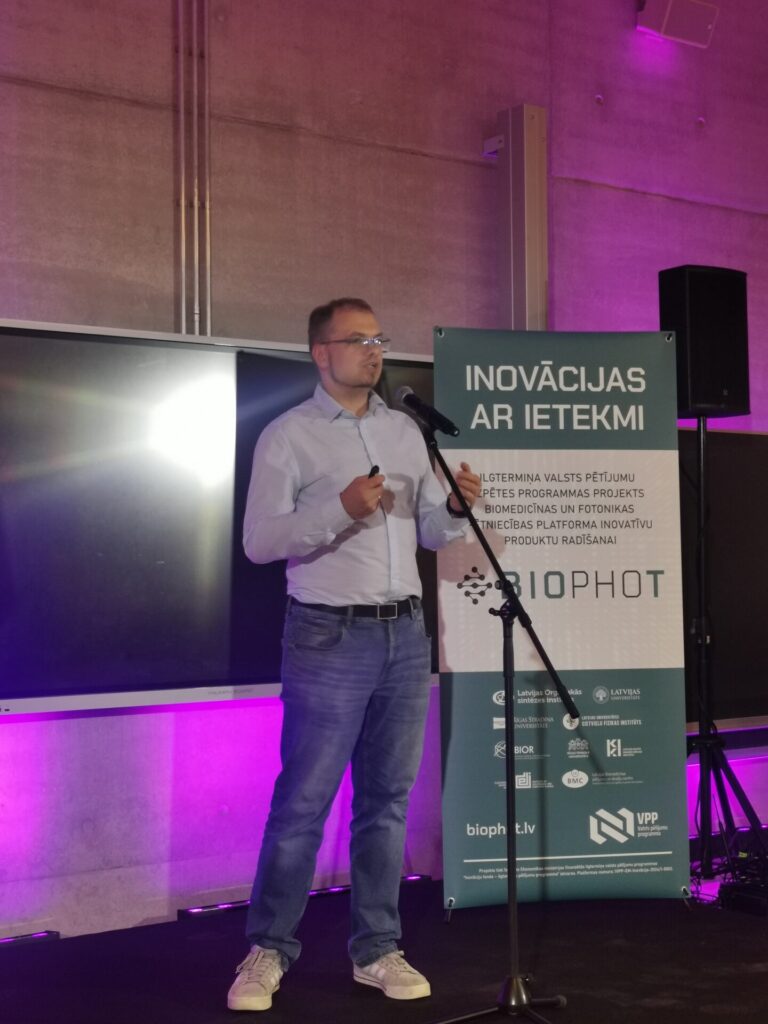
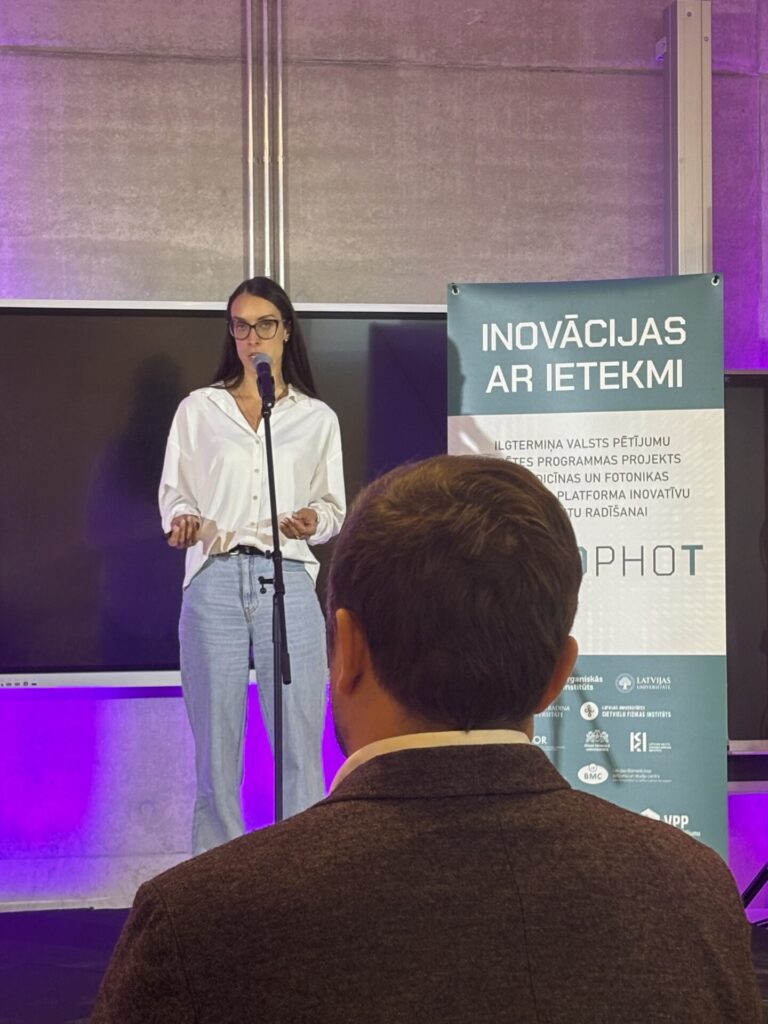
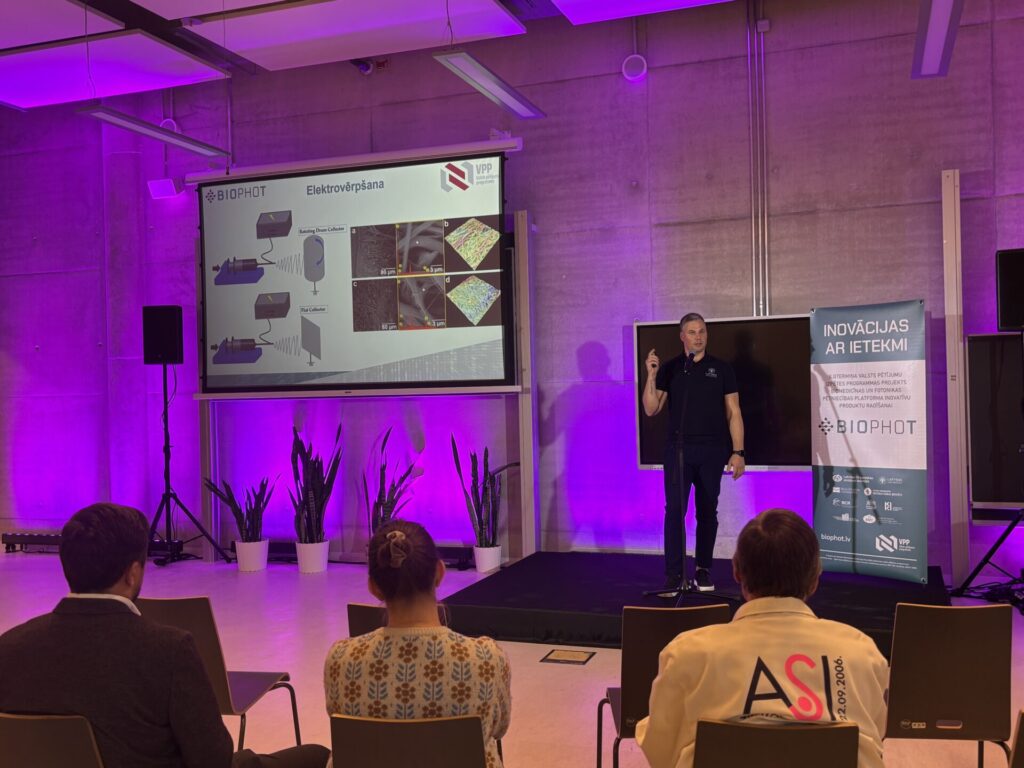
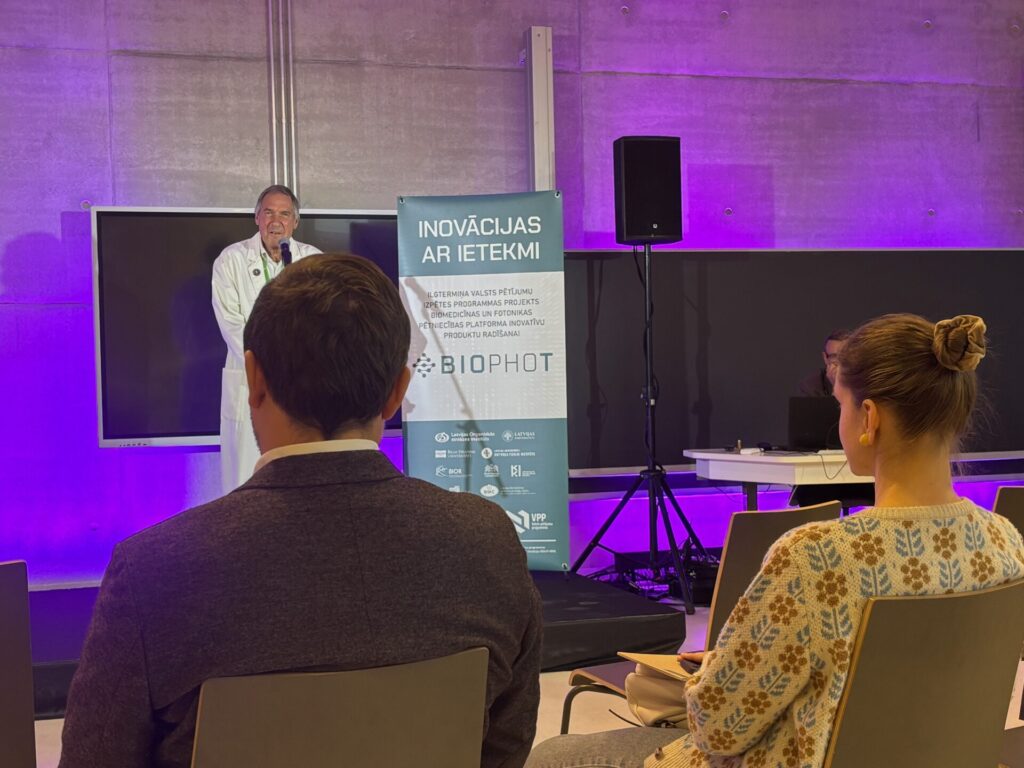
Physicist Tom Beinert surprised the audience by demonstrating how a rotating magnet can generate temperatures so high that an egg can be fried in a hot cast-iron pan. This solution could be successfully applied in the metalworking industry in processes for heating cast iron moulds, reducing energy consumption by up to 30%.
Artis Kinēns, Associate Professor, University of Latvia presented a project on a smart sensor that could accurately detect the freshness of seafood products and significantly reduce food waste - as around a third of the world's seafood is currently thrown away if spoilage is not detected in time.
Jana Andžāne from the Institute of Chemical Physics at the University of Latvia presented the development of flexible thermoelectric generators that use human body heat to generate electricity for smart devices such as heart rate monitors, smart watches and sensors. Such generators could replace some lithium batteries and reduce e-waste.
Professor Jānis Spīgulis presented an innovative endoscopic solution for early cancer diagnosis, while researcher Alexey Likhachev presented a technology that allows rapid detection of antimicrobial resistance - a vital factor, especially in severe infections such as sepsis. Līga Kunrade from the Department of Pharmaceutical Sciences at the University of Latvia presented an innovative solution for malaria detection in the field - a rapid test that identifies the specific causative agent of malaria and immediately starts effective treatment.
Researcher Mārtiņš Borodušķis presented a project on improved haemostatic materials for wound treatment, early prototypes of which have already been tested in real combat conditions in Ukraine. The project team is working on a next generation solution with a chitosan matrix and electrospinning technology.
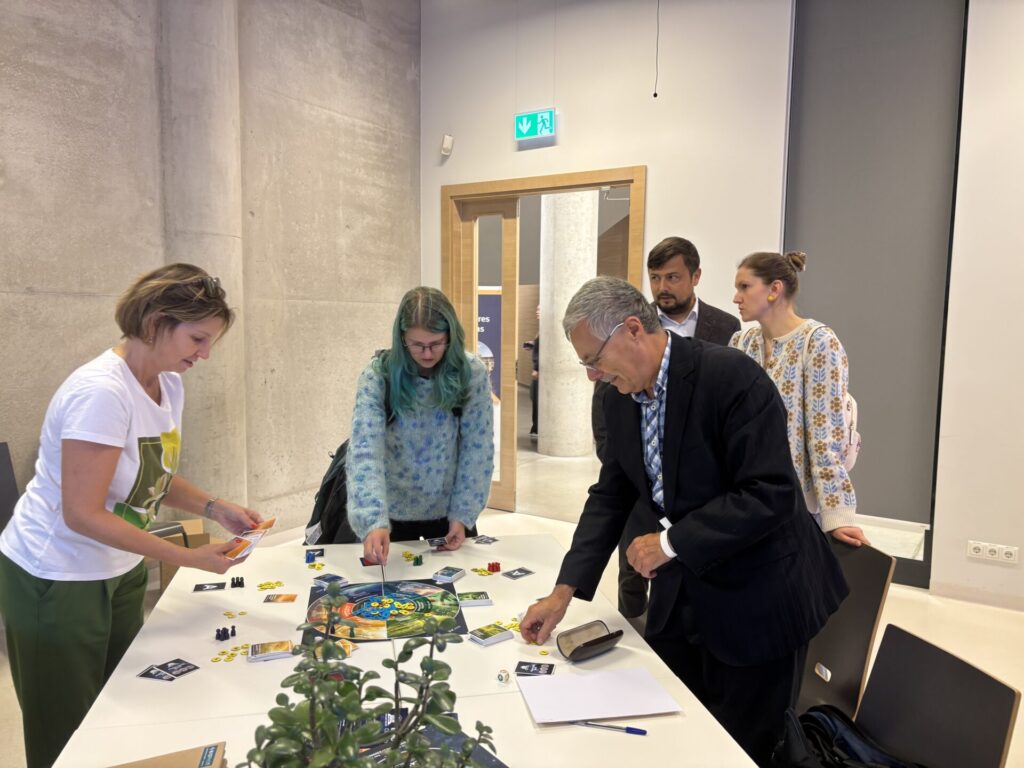
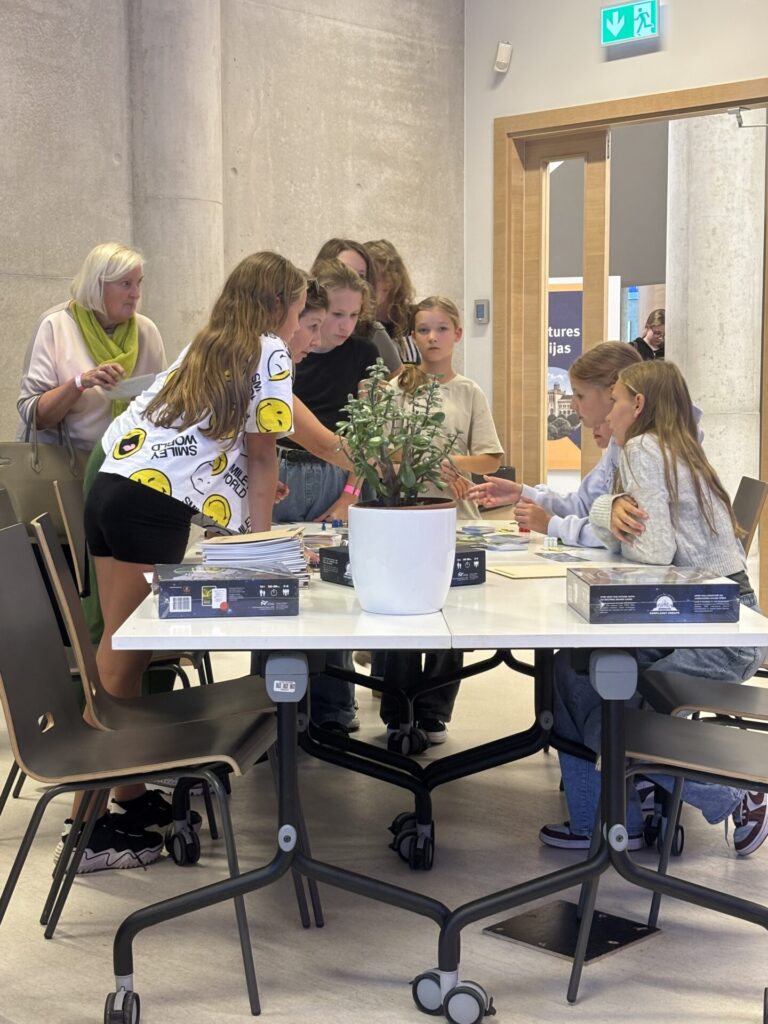
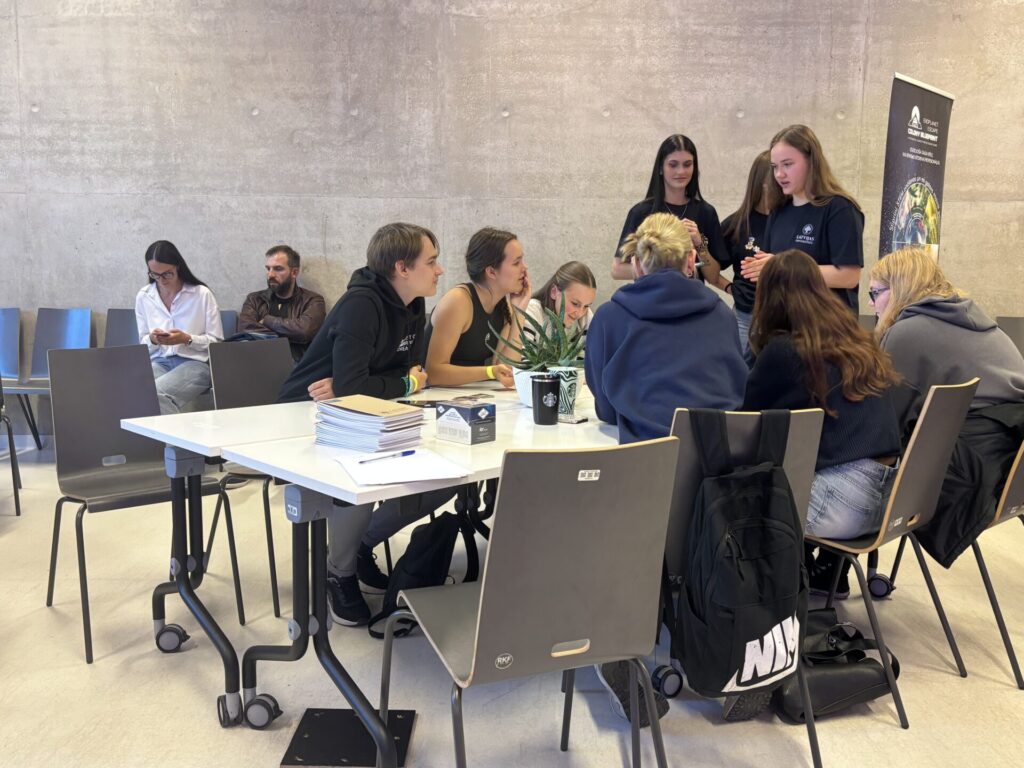
During the evening, the Faculty of Science House was also buzzing with activity at the STEM board games designed especially for families and children. Both younger visitors and their parents enthusiastically participated in the quiz game "STEM UP!", where researchers from the University of Ljubljana were involved in designing and testing the questions, making the game not only entertaining, but also educational. Alongside it, a brand new board game "Exoplanet Escape" allowed children and adults to work together to complete missions, overcome various challenges and learn about STEM professions at the same time. The great interest of the visitors showed that science can also be presented as an engaging and exciting experience for the whole family.
An equally exciting programme took place at the Institute of Solid State Physics, where four promising projects were presented on the BioPhoT stage.
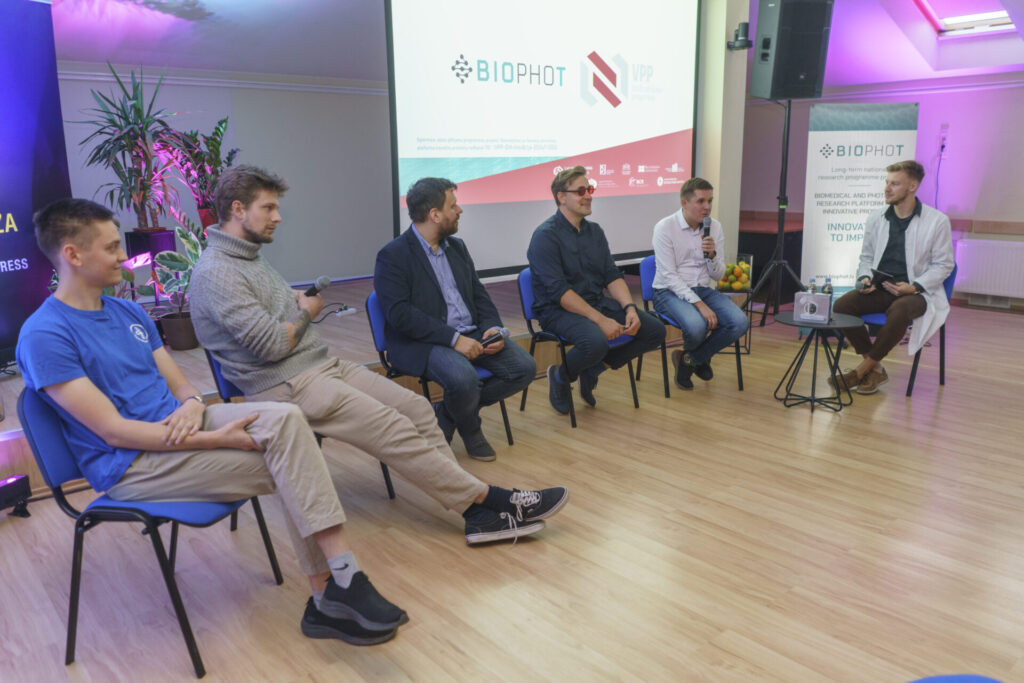
Anatolijs Šarakovskis, Head of the CFI Spectroscopy Laboratory, talked about a fibre-optic temperature sensor that operates over an extended temperature range and is applicable in conditions where traditional measurement methods are not effective, such as induction cookers, high-voltage transformers or explosive environments.
Arturs Bundulis, Senior Researcher, Organic Materials Laboratory, presented the possibilities of heterogeneous integration of polymers in inorganic integrated photonic circuits to offer a cheaper, more energy-efficient option instead of conventional electronic chips.
Rihards Ruska, Research Assistant, CFI, LU, presented a project on bioactive fluorescent coatings with antimicrobial properties that could be used in healthcare or food packaging to protect products, homes and human health from mould in the future.
See Sergejs Fomins, Head of the Vision Perception Laboratoryspoke about a mobile infrared spectroscopy underwater sensor capable of detecting PFAS and microplastic contamination in different aquatic environments - a problem that is becoming increasingly important worldwide.
The presentations were followed by a panel discussion with the project authors and "Mentor of BioPhoT platform Ģirts Ozoliņš, Senior Expert on Technology Commercialisation and Innovation, CFI. He introduced the mission of the BioPhoT platform - to support the translation of scientific ideas into practical solutions and commercialisable technologies.
During the discussion, the researchers briefly recalled the nature of their research and outlined its potential impact on society, while in the ensuing conversation they shared their career paths as scientists - the motivations, challenges and opportunities of working in science - to give the young minds in the audience a better insight into their potential future careers.
Guests could also enjoy a fire show, challenge themselves in a laser maze and a break-out room, and watch and try out various experiments with light, temperature and the latest technologies developed at the Institute, such as microfluidics chips and touch sensors. Throughout the evening, guests also showed interest in other scientists' stories, both on specific scientific topics (micro and nano worlds, light technologies) and on mistakes made in their scientific careers that have taught them valuable lessons.
Scientists' Night 2025 clearly showed that Latvian scientists are not only working on high-level research, but also actively thinking about its societal relevance and practical applications. "The BioPhoT stage programme became a shining example of how science can inspire, educate and drive innovation, while at the same time stimulating public interest in technological development and the scientific profession.
